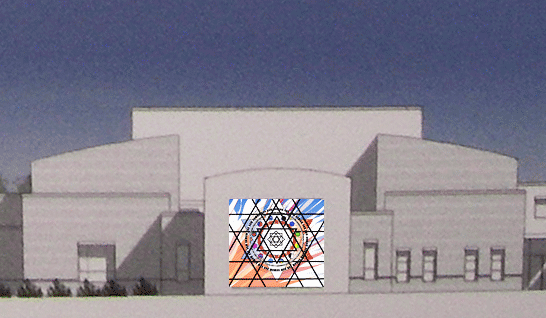 |
|||||
|
TEMPLE BETH EL Charlotte, North Carolina Design Overview June 6, 2009 |
|||||
|
|||||
Design Overview |
|||||
The project for which we are designing consist of three separate installations along a building axis, which runs through the Chapel, Recognition Hall and the Main Sanctuary. We have defined an idea, which associates the three separate projects as progressing from "the earthly to the transcendent."
The overriding theme of the three projects, taken together, revolves around the idea of Al Shlosha Devarim The theme of the sanctuary art work, Jacob’s Dream, is about that which connects the Heaven and the Earth, a ladder, symbol of theTorah. One has to climb a ladder. It is a device, which requires action. At the western end of the axis, the Chapel stained glass combines the laws of the Torah with the insignia of the Twelve Tribes, notarizing the contract between God and Israel, which is the revelation. At the eastern end of the axis, in the sanctuary, the redemption of Jacob is represented, who at a most desperate and wayward point in his life, is truly saved by a gentle and reassuring God. The emphasis, in all the ideas is upon action, on deeds, on the performance of work, the maintenance of the community, on taking responsibility, on what is commanded from us, what is required of us and what it is hoped we may be capable of. This, more than anything, is what makes this work specifically, a manifestation of the community of Temple Beth El, whose leaders, and congregants take the commandment to social action seriously. |
|||||
